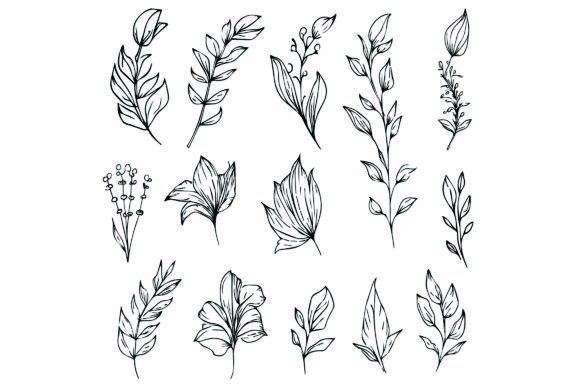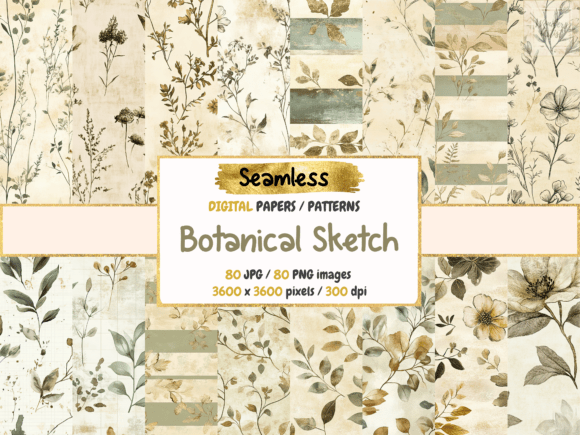Discover the captivating world of botanical line drawings—where simplicity meets artistic expression. This comprehensive guide explores minimalist plant illustrations, continuous line techniques, and nature-inspired sketches that bring botanical beauty to life with just a few strokes.
Introduction to Botanical Line Drawing
Botanical line drawing has emerged as one of the most popular art trends in recent years, captivating both artists and design enthusiasts with its elegant simplicity. This art form strips away color and complex shading, focusing instead on clean, expressive lines that capture the essence of natural subjects. The minimalist approach creates sophisticated, versatile artwork that works beautifully across various applications—from home decor to branding and digital design.
In this guide, we’ll explore inspiring botanical line drawing ideas, techniques, and applications that can elevate your creative projects or help you begin your journey into this satisfying art form.

Minimalist Plant Illustrations: Beauty in Simplicity
Minimalist plant illustrations capture the essence of botanical subjects using the fewest possible lines while maintaining recognizable forms. This approach creates striking, elegant artwork that communicates botanical beauty through restraint rather than elaborate detail.
Popular subjects for minimalist plant illustrations include:
- Succulents with their geometric, symmetrical shapes
- Tropical monstera leaves reduced to their distinctive outlines
- Graceful ferns represented by simple curved lines
- Cacti featuring clean, structural silhouettes
- Delicate flowers with simplified petal arrangements
The key to successful minimalist plant illustrations lies in identifying the defining characteristics of each plant and representing them with confident, deliberate lines. These illustrations work beautifully as wall art, greeting cards, or as decorative elements in branding and packaging.

Continuous Line Flower Drawings: Fluidity in Motion
Continuous line flower drawings represent one of the most captivating techniques in botanical illustration. Created without lifting the pen from the paper, these drawings feature a single, unbroken line that flows and curves to form complete botanical compositions. The technique creates a sense of movement and organic fluidity that perfectly captures the natural grace of flowers and plants.
Key characteristics of continuous line flower drawings include:
- Dynamic, flowing movement throughout the composition
- Varying line weight to create visual interest
- Overlapping elements that create depth despite the 2D nature
- Occasional deliberate “imperfections” that add charm and character
- Focus on gesture and form rather than minute details
This drawing style works particularly well for florals like roses, peonies, and wildflowers, where the natural curves and flowing forms lend themselves to continuous line interpretation. The resulting artwork feels both contemporary and timeless, perfect for modern interior styling.

Botanical Sketch Templates: Foundations for Creativity
Botanical sketch templates provide valuable starting points for artists of all skill levels. These foundational outlines and frameworks help artists understand the underlying structure of plants and flowers, making them ideal for both learning and production purposes.
Popular botanical sketch templates include:
- Basic leaf structures with guidelines for veins and contours
- Flower anatomy templates showing petal arrangements
- Branch and stem structures with placement guides
- Composition frameworks for botanical arrangements
- Step-by-step progression templates for complex subjects
For beginners, these templates offer an accessible entry point to botanical drawing without the intimidation of starting from scratch. For experienced artists, templates can speed up the creative process for commercial projects or when working with unfamiliar plant species.

Simple Leaf Drawing Patterns: Natural Repetition
Leaf patterns represent some of the most versatile and appealing subjects in botanical line art. The natural symmetry and repetition found in leaves make them perfect candidates for pattern creation, whether for textile design, wrapping paper, or digital backgrounds.
Effective approaches to simple leaf drawing patterns include:
- Repeating single leaf motifs in organized arrangements
- Creating seamless patterns with varied leaf sizes and orientations
- Developing border designs with flowing leaf forms
- Combining different leaf types in cohesive compositions
- Exploring negative space between leaf elements
The beauty of leaf patterns lies in their scalability—they work equally well as delicate details in small applications or bold statements in larger formats. Their organic nature brings a touch of the outdoors to any design project.

Single-Line Nature Art: Efficiency in Expression
Single-line nature art takes minimalism to its logical conclusion by representing entire botanical subjects with just one continuous line. This approach challenges the artist to communicate maximum information with minimum means, resulting in artwork that feels both sophisticated and accessible.
Distinctive features of single-line nature art include:
- Extreme economy of line work
- Focus on the most essential contours and shapes
- Open spaces that the viewer’s mind completes
- Clean, modern aesthetic with high visual impact
- Versatility across different application scales
This style is particularly popular for contemporary branding, tattoo designs, and minimalist home decor. Its simplicity makes it highly adaptable across different media, from digital applications to embroidery and wire sculptures.

Tools and Techniques for Botanical Line Drawing
Creating beautiful botanical line drawings doesn’t require expensive equipment. Most artists find success with just a few quality tools:
- Fine-tipped black pens (0.05mm to 0.5mm) for varied line weights
- Smooth, high-quality paper that prevents ink bleeding
- Light table or tracing paper for refinement stages
- Digital drawing tablets for those working in digital formats
- Simple pencils for initial sketching and planning
Technique-wise, beginning with light, gestural pencil sketches allows artists to capture the overall form before committing to ink. For continuous line work, practicing fluid, consistent movement helps develop the necessary control. Many artists find that drawing from life produces more dynamic results than working from photographs.

Applications and Uses for Botanical Line Drawings
The versatility of botanical line drawings makes them suitable for countless applications:
- Wall art and framed prints
- Greeting cards and stationery
- Logo design and branding elements
- Tattoo designs
- Fabric patterns for fashion and home textiles
- Book illustrations
- Digital assets for websites and social media
- Custom stamps for crafting
- Embroidery patterns
The clean, graphic nature of these illustrations allows them to be easily scaled, reproduced, and adapted across different media without losing their visual impact.

Starting Your Botanical Line Drawing Journey
For those inspired to try botanical line drawing, here are some beginner-friendly steps:
- Begin with observation—spend time looking closely at plants and noticing their structures
- Practice basic line control exercises to develop steady hand movements
- Start with simple subjects like individual leaves before moving to complex flowers
- Experiment with different pen types and line weights
- Try continuous line drawing without planning, allowing intuition to guide your hand
- Study the negative spaces between plant elements, not just the elements themselves
Remember that botanical line drawing celebrates simplicity and interpretation rather than photorealistic detail. Embrace the distinctive style that emerges from your own hand movement and perspective.

Conclusion: The Timeless Appeal of Botanical Line Art
Botanical line drawing continues to resonate with contemporary audiences despite (or perhaps because of) its stripped-back approach. In a visually complex world, these clean, elegant illustrations offer a refreshing simplicity that highlights the intrinsic beauty of natural forms.
Whether you’re creating art for personal enjoyment, developing a distinctive brand identity, or looking for versatile design elements, botanical line drawings offer endless possibilities. Their combination of accessibility, visual impact, and adaptability ensures this art form will remain a favorite among artists and designers for years to come.
This comprehensive exploration of botanical line drawing ideas highlights the versatility and beauty of this popular art form. From minimalist plant illustrations to continuous line techniques, these approaches offer endless creative possibilities for artists and designers of all skill levels.


